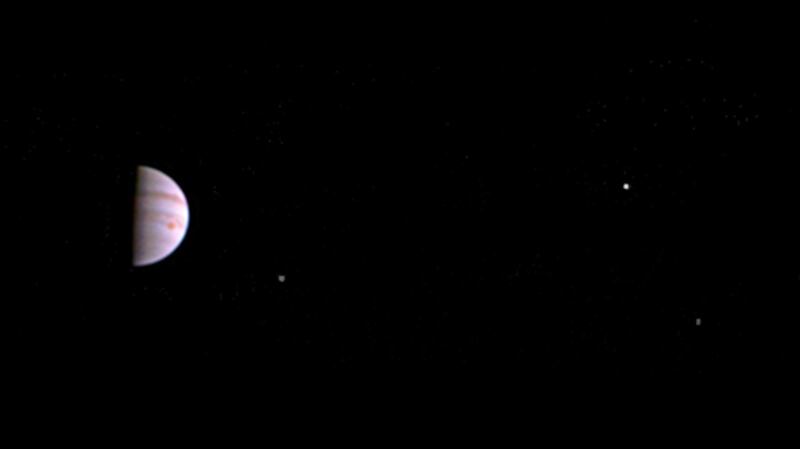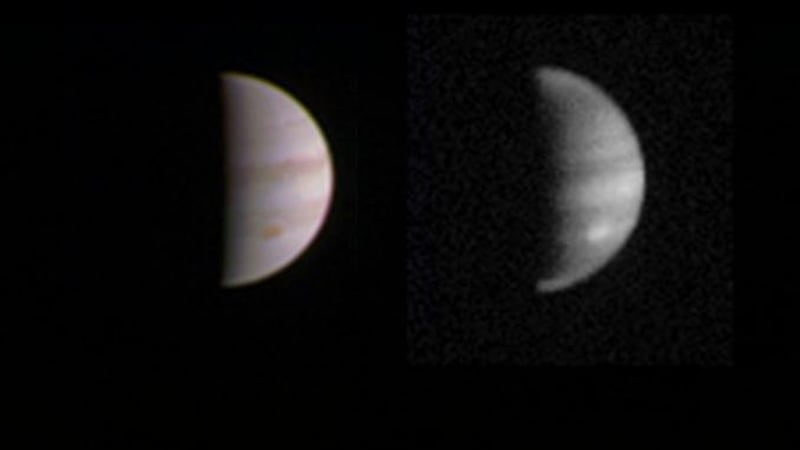A spacecraft has skimmed the clouds of Jupiter in a record-breaking close approach to the giant planet. Juno activated its whole suite of nine instruments as it soared 4,000kms above Jupiter’s swirling cloudtops, travelling at 209,000km/h, on Saturday.
Nasa tweeted that Juno had successfully completed its closest ever fly-by to the planet right on schedule. It is the first of 36 such passes that the craft is scheduled to make over the next 18 months.
Rick Nybakken, Juno's project manager at Nasa's jet propulsion laboratory in Pasadena, California, said: "Early post-fly-by telemetry indicates that everything worked as planned and Juno is firing on all cylinders."


Soarin' over #Jupiter. My 1st up-close look of the gas-giant world was a success! https://t.co/5DghesSgvY pic.twitter.com/BTbhOD8rJy
— NASA's Juno Mission (@NASAJuno) August 27, 2016
Use @NASA_Eyes to preview my #Jupiter close approach: https://t.co/4Zka7S9vIJ pic.twitter.com/kJWN7bU8mu
— NASA's Juno Mission (@NASAJuno) August 27, 2016
Today is the day of my #Jupiter closest approach! I’ll skim past the planet at a mere 2,600 miles above the clouds. pic.twitter.com/QJ8u5aJWAF
— NASA's Juno Mission (@NASAJuno) August 27, 2016
Mission controllers at the space agency expect to capture stunning images and a wealth of scientific data from the approach, but it will take some days for all the data collected to be downloaded to Earth.
"We are getting some intriguing early data returns as we speak," said Scott Bolton, principal investigator of Juno from the Southwest Research Institute in San Antonio.
“It will take days for all the data to be downlinked, and even more to begin to comprehend what Juno and Jupiter are trying to tell us.
“This is our first opportunity to really take a close-up look at the king of our solar system and begin to figure out how he works.”
Nasa hopes to release a handful of close-up images from JunoCam, the probe’s panoramic colour camera, later this week. They should include the first detailed pictures of Jupiter’s north and south poles.
No spacecraft has flown so near to Jupiter before. The previous record for the closest approach to the planet was set by Nasa’s Pioneer 11 spacecraft, which passed at a distance of 43,000kms in 1974.
Only one other spacecraft, Galileo, which visited Jupiter and its moons from 1995 to 2003, has orbited the planet.
Although it was deliberately crashed on to Jupiter at the end of its mission, it orbited from much further out than Juno.
Powered by three huge solar panels, Juno was launched into space by an Atlas V rocket from Cape Canaveral, Florida, on August 5th, 2011. It took five years to complete the 2.3bn-mile journey from Earth.
At the end of its 20-month mission, Juno will follow in the footsteps of Galileo by making a one-way plunge into the planet’s thick atmosphere.
Scientists are eagerly looking forward to analysing a treasure trove of data about Jupiter’s composition, gravity, magnetic field, and the source of its raging 617km/h winds.
A British team from the University of Leicester is playing a key role in the mission, focusing on Jupiter’s powerful magnetic field, its spectacular auroras, and its dynamic atmosphere.
The Guardian








